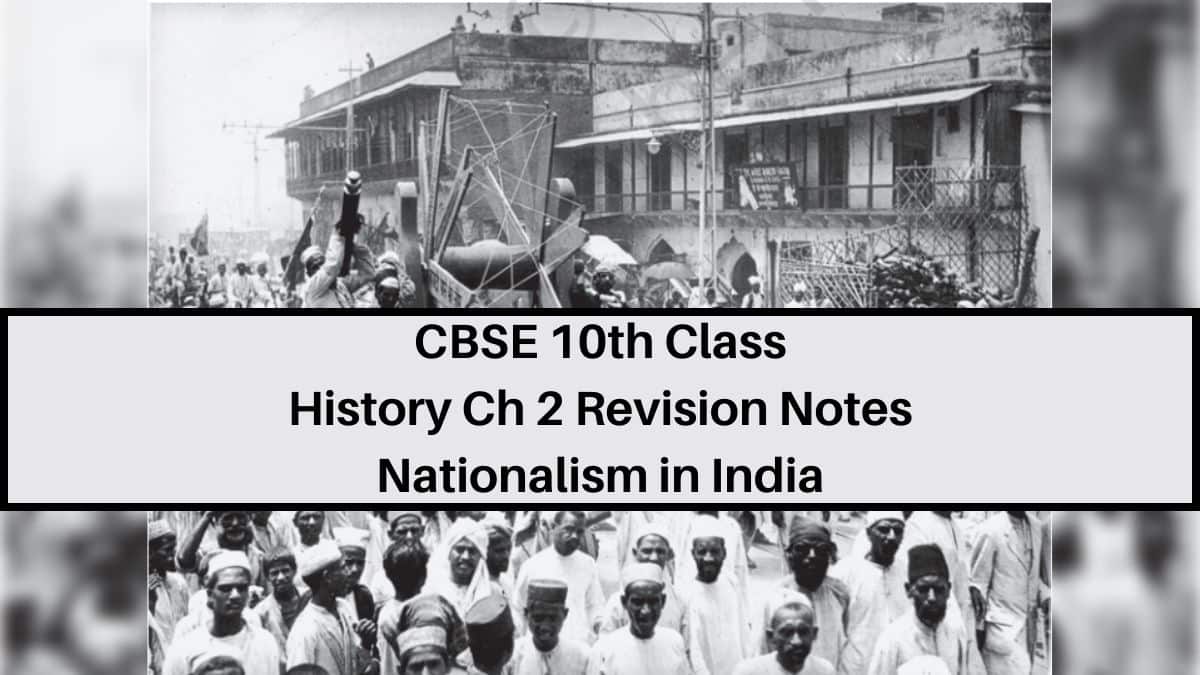CBSE Class 10 Social Science Revision Notes Nationalism in India: Revision notes play a crucial role in helping candidates prepare for the CBSE 10th class board exams in 2024. These notes are incredibly convenient during exam preparation and the actual examination, allowing students to regularly review the entire syllabus comprehensively. However, considering the fact that CBSE has been updating its curriculum since 2020, it is vital for students to select their study material carefully. Unreliable revision notes may contain half or wrong information from the outdated syllabus, resulting in the wastage of your valuable time. To address this concern, Jagran Josh offers reliable short notes for CBSE Class 10 SST History Chapter 2, meticulously prepared by our subject experts to align with the latest syllabus of 2023-24. These notes encompass all significant topics and key points necessary for achieving good scores in the board exams. Each topic is accompanied by concise yet comprehensive explanations, facilitating effective learning. Additionally, students can conveniently download these concise notes using the link from this article.
Revision Notes for CBSE Class 10 History Chapter 2 Nationalism in India
- Nationalism is when people in the same area share a strong bond because of their common history, politics, and culture.
- Factors that caused Nationalism to grow:
In Europe: It happened when nation states were formed.
In colonies like India: It came about because people wanted to free themselves from colonial rule.
- India’s First Freedom Struggle happened in 1857.
- In 1870, Bankim Chandra wrote the song Vande Matram.
- In 1885, the Congress was established in Mumbai. W.C. Banerjee led the first meeting of Congress.
- In 1905, Lord Curzon suggested dividing Bengal.
- In 1905, Abanindra Nath Tagore painted a picture of Bharat Mata.
- In 1906, Aaga Khan and Nawab Salimullah created the Muslim League.
- In 1907, Congress split into extremists and moderates.
- In 1911, the Delhi Durbar was organized.
- The Bengal Division was abolished during the Delhi Durbar.
- In the Delhi Durbar, the capital was moved from Kolkata to Delhi.
- In 1914, the First World War began.
- In 1915, Mahatma Gandhi returned to India.
- In 1917, Mahatma Gandhi led the Champaran Satyagraha to protest against indigo plantation.
- In 1917, Mahatma Gandhi organized a Satyagraha for farmers in Kheda, Gujarat.
- In 1918, Mahatma Gandhi initiated a Satyagraha for the craftsmen of the cotton textile mills in Gujarat.
- In 1918, the First World War ended.
- The British Government rejected the demand for Indian self-rule.
- In 1919, the British Government passed the Rowlatt Act.
- On April 13, 1919, the Jallianwala Bagh massacre occurred in Punjab.
- In 1919, the Khilafat movement was started by Muhammad Ali and Shaukat Ali.
- In 1920, Mahatma Gandhi began the non-cooperation movement.
- In 1922, Mahatma Gandhi called off the non-cooperation movement due to violence in Chauri Chaura.
- On August 9, 1925, revolutionaries in Kakori looted a train carrying English treasure.
- In 1928, the Simon Commission came to India. Lala Lajpat Rai died during a protest.
- On April 8, 1929, Bhagat Singh and Batukeshwar Dutt threw a bomb in the assembly.
- On March 12, 1930, Mahatma Gandhi started the march from Sabarmati to Dandi.
- On April 6, 1930, Mahatma Gandhi broke the Salt Law and began the Civil Disobedience Movement in Dandi.
- In 1930, Dr. Ambedkar formed the Depressed Classes Association for the scheduled castes.
- On March 23, 1931, Bhagat Singh, Sukhdev, and Rajguru were hanged.
- In 1931, the Gandhi-Irwin pact was signed, and the Civil Disobedience Movement was suspended.
- In 1931, Mahatma Gandhi participated in the Second Round Table Conference but didn’t achieve the desired success.
- In 1932, the Poona Pact was signed between Mahatma Gandhi and Dr. Ambedkar.
- In 1933, Choudhary Rahmat Ali first suggested the idea of Pakistan.
- In 1935, the Indian Government Act was passed, and regional governments were formed.
- In 1939, World War II began.
- In 1940, the Muslim League passed a resolution for a separate homeland for Muslims called Pakistan.
- In 1942, the Quit India movement was started by Mahatma Gandhi with the slogan “Do or Die.”
- In 1945, the USA dropped nuclear bombs on Japan, and World War II came to an end.
- In 1946, the Cabinet Mission came to India with a proposal for a constituent assembly.
Related:


